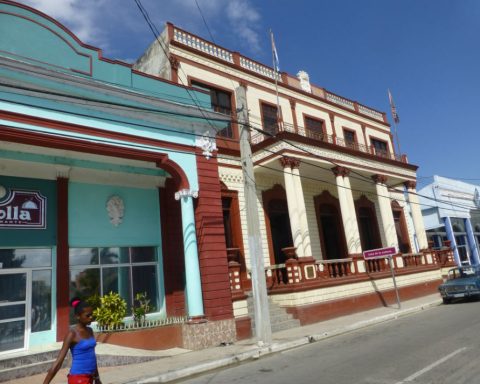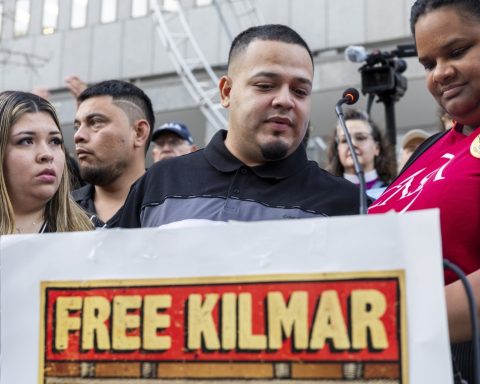José Carlos Mesa would have been a professor of Physical Culture, or perhaps a carpenter; however, under the stage name Joe Ferro, he is today known as a blacksmith-artist, a trade and a passion that he defends tooth and nail.
He has been guided by the maxim that if you don’t believe in what you like and defend it, nobody will do it for you, and thus, he overcame his family’s wishes for him to go to university. He dropped out of college and began studying blacksmithing at the Gaspar Melchor de Jovellanos Workshop School, of the Office of the Historian of the City of Havana (OHCH).
Traversing a path that has taken him a little over 10 years, he arrives at this date with achievements behind him. With his lamps, he won the Product Category Award at the 2019 edition of the International Craft Fair (Fiart), and is also in charge of designing the National Award for Cultural Journalism, which is awarded by the Ministry of Culture (Mincult).
In his work we find lamps and sculptures, and Ferro’s firm position in defending metal as the basis for giving life to the pieces and his most daring creative ideas is evident in them.
When telling, in an exclusive interview to the Cuban News Agency, about his career, he relates that as a child he was already interested in handicrafts and, when doing the tests at the Workshop School, it was carpentry that caught his attention the most.
Destiny wanted him to be awarded blacksmithing, and there, he indicates, he began to see how with heat and ancient techniques metal can be transformed, not only to make bars, but also other things, even inside the bars.
They were not the ones I used to see in the cast where I live, but more artistic, with symbols, elements and marked styles, with what is the classic colonial Cuban ironwork and what we have inherited from Europe, he points out.
When he was in his second year as a Skilled Worker, non-agricultural cooperatives boomed.
We approached the oldest professor of the subject, because we had heard one of the conversations of the historian Eusebio Leal in which he spoke of giving recent graduates a new way of managing themselves, which was not just working for restoration companies, recalls the artist.
He says that later they learned that the cooperative was being managed, but there were no one who dared to do so. We had nothing to lose and we jumped in, he says.
They then went to the Artistic Foundry workshop of the OHCH, which is attached to the workshop school, and there he began to see work in bronze, sculpture from another point of view, «not only as a hobby».
Together with that cooperative, Metales Calflat, he worked for six years and, at the same time, he joined community groups. In 2015 she participated in the XII Biennial of Havana, in the collective exhibition “Plan Jaba”.
I always tried to insert myself into collective exhibitions, until in 2018 I had my personal one, since, after presenting my file to the Metals Association of the Cuban Association of Artisans and Artists (ACAA) in the previous calendar, in the following one the The Goldsmith Museum gave me the opportunity, he explained.
By 2019 he began to work the lamps.
I had already seen the fire extinguisher as a base, I had seen the reference, but I didn’t want them to look like the ones you see on Pinterest. I tried to take them to the Cuban context, and always defending what vintagewhich I like a lot, comments.
This is how those award-winning lamps at FIART 2019 were born.
In 2020, Joe Ferro started his journey alone. He left behind the cooperative, not the trade, and tried to find his way as an independent artist. However, the COVID-19 pandemic forced him to reinvent himself on social media.
Last year brought the blacksmith-artist three exhibition opportunities. He participated in the “State of the Spirit” exhibition, inaugurated on December 3 at the Cuba Pavilion, and framed in the context of the XIV Havana Biennial, in addition to being part of the celebration of the 35th anniversary of the Hermanos Saíz Association.
On December 8, the ACAA’s Manos gallery hosted the inauguration of “It’s not utopia”, where Ferro offered the public an installation in which “he mixed the forced foot of the Biennial, which is future and contemporaneity”. That constitutes his way of seeing the city we want, more ecological and futuristic, in which technology is sought, but also recycled.
Finally, with the exhibition “Experiences of a blacksmith-artist”, it accompanied the Cuban Association for the United Nations (ACNU) to become, for the first time, a sub-venue of the Biennial.
For the current exercise I would like to be able to find that space that works as a workshop-gallery, I have friends who would like to join and everything would work as a community project, a meeting point to promote metal sculpture, he said.
Regarding sculpture, he confesses that he would like to use other materials, incorporate marble or wood into metal, or try stone; mix it up, fuse the trade more with the basics, work in the forge and elements of colonial blacksmithing.
For the lamps I always have new ideas, which sometimes appear faster than I can execute them due to logistical issues and difficulties in acquiring the materials, because —for example— the hardware stores are in Freely Convertible Currency.
One last question about blacksmithing and Joe Ferro answers it very confidently: As a trade I will always defend it on all fronts. I am an artist because before I learned to be a blacksmith.
















